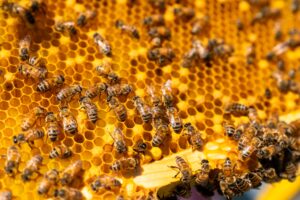The southwest of WA is getting drier, and it wasn’t exactly a tropical paradise to begin with.
Some Perthians, like me, enjoy our dry heat. It’s more merciful to wavy hair and doesn’t leave you feeling drenched as soon as you leave the comforts of climate control.
But it may force us to change the way we look at the state’s water supply.
Liquid water is considered the main molecule for sustaining life on our planet or anywhere else in the universe—it’s a precious resource. So with climate change and reduced rainfall to contend with, we need to remain vigilant.
Thankfully, Water Corporation has been planning for our future.
Where does the water go?
We’re lucky in Australia to have clean, drinking-quality water flowing freely from our taps on demand. But where does it all come from? And where does it go?
If you remember back to your year 5 science class, you’ll probably remember seeing some crude clip-art image of the water cycle.

Evaporation, condensation, precipitation—this neat little cycle is easy for kids to digest, but it’s not the whole story. The urban water cycle also comes into play, and that includes all the water we use in our homes and industries and for irrigation.
If we splash out too much with hour-long showers and needlessly hosing down driveways, we can start to see negative impacts on the environment and on our freshwater supplies.
The great news is WA has been paying attention and acting more water-wise. Household water use has dropped 7% in the last year alone.
It’s the kind of good work we need to keep up in the face of dwindling rainfall.
“In the south west of WA, rainfall has reduced by 19% since the 1970s,” Water Corp spokesperson Louise Fleming tells me.
“This has had a far more dramatic impact on stream flow to Perth’s dams, which has reduced from a post-1975 average of 189 billion litres each year to an average of 50 billion litres in the last 5 years.”
These trends, combined with Perth’s growing population, means it might not be wise to put all our eggs in the groundwater basket.
So where on Earth is our water going to come from?
Australia’s first groundwater replenishment scheme
If I made the suggestion to drink treated wastewater, it might make some people feel uncomfortable.
But if you’ve ever been to Disneyland in California, you probably already drank it!
The wonders of technology mean we can treat wastewater to the highest drinking water standards. And Perth has already begun ‘topping up’ our supplies with it.
“Groundwater replenishment is the process by which secondary treated wastewater undergoes advanced treatment to produce recycled water,” says Louise.
“The recycled water is recharged to an aquifer for later use as a drinking water source.”
Wastewater is 99.97% water. Plus, all the ‘gross bits’ are well and truly filtered out before it gets to your tap. They even get put to good use!
“Liquid and solids are separated during the wastewater treatment process,” says Louise.
“Through this process, a large amount of organic matter is biologically converted into methane gas, which can be used by the treatment facility to generate power or heat for the process.”
“The stabilised solids resulting from the digestion process are called biosolids, which can be used by farmers to promote crop and plant growth.”
Basically, the solid waste removed in the treatment process make excellent fertiliser for farmers.
“Water, water everywhere, so let’s all have a drink!”
This is the misquoted sentiment of a stranded Homer Simpson when he slurps down a handful of seawater after failing to ration his freshwater supply.
This was a bit of a “D’oh!” moment for Homer, but given that most water on Earth is seawater, it would be really convenient if we could drink it.
And it seems Water Corp has been thinking the same thing.
“Investment in climate-independent water sources means around half of Perth’s water can now be supplied from climate-independent seawater desalination plants,” says Louise.
Securing WA’s water future
Without good planning and practice, WA’s water future might not look so bright.
That’s why we all need to be conscious of our water use—even if it does seem like an infinite stream will always spill from our taps.
We can all do our bit to save water. For example, you could deeply shame those family members who leave the tap running while they brush their teeth. Water Corp has some good ideas too.
Water Corp is working towards targets outlined in the Water Forever plan, including recycling 30% of all wastewater by 2030.
“In the 2015/16 financial year, around 13% of all treated wastewater was recycled across Western Australia,” Louise says.
“This will increase significantly in 2017/18, with the start of recharge from the Groundwater Replenishment Scheme in Craigie, with up to 14 billion litres of recycled water to be recharged to the Leederville and Yarragadee aquifers each year.”
Water supply is dynamic, which means our approaches need to be too. Water Corp is constantly responding and adapting to changing circumstances, including climate change, to ensure WA’s water future.
So the next time you turn on the tap, put a load of laundry on or even flush the toilet, just take a second to appreciate the liquid life flowing through your home. If we’re smart and prepared, we’ll be able to enjoy these luxuries for many years to come.








